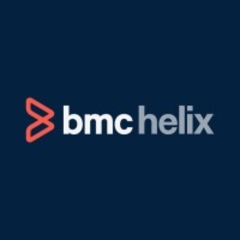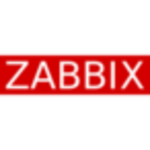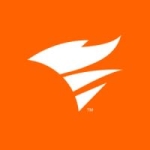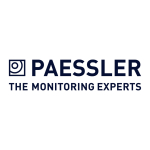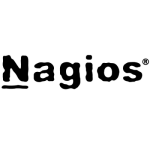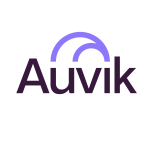What is our primary use case?
Park Place Technologies brought in TrueSight for three reasons. The first reason was the Presentation Server - the architecture.
The second reason was the fact it has the AIOps piece.
The third reason was their partner, called Sentry Software, out of France. We are a hardware maintenance company. We're probably one of the largest providers, worldwide, for replacing drives and storage equipment. We brought TrueSight in as a means of seeing if we could reduce the number of physical touches on a service ticket from eight to two. We've been accomplishing that with TrueSight and the Sentry software.
We provide post-warranty support for storage equipment and data center equipment. For example, if it's a VNX piece of storage gear that goes off warranty, we come in and we maintain it at a high level off of what the customer paid the OEM. We do the parts and the service in 35,000 data centers worldwide. TrueSight is enabling us to get that done in an automated fashion.
Sentry is the Knowledge Module we use in TrueSight. It has all the information about the storage equipment that we maintain. It tells us the part, the chassis, serial number, and all the detail that we spend a lot of time on phone calls with the customer trying to ascertain. We're doing that automatically now.
How has it helped my organization?
We brought the product in to handle the following: We're in 35,000 data centers today. We have 16,000 customers and we support about 400,000 assets. Those are big numbers. The pieces of storage equipment we provide have something native from the equipment manufacturers, the OEM, called "phone home." What happens is, when these devices start having a problem they send out an email that says, "I'm having this problem." To put that into perspective, we were trending towards 2,000,000 emails at the end of 2017, and growing. We would have to read 2,000,000 emails to find out what was going on. Something lower than seven percent actually had a problem we really had to read, and something well below one percent of those were actually a service event.
Before we brought in TrueSight, there were 8.2 touches via email or phone call after the ticket had come in, including exchanging log files with the customer through to our resolving it. And on the customer side, they had somebody having to look at the equipment to make sure it was actually working. From those 8.2 physical connections with them, we're down to two with TrueSight.
And here's the big difference. Instead of these things sending all of that information out in those emails, it's captured in the Knowledge Module, the policy and the agent, on the customer side of the firewall. What TrueSight does is that when it installs it takes a week to come up with what's called a dynamic baseline. It says, "For this piece of equipment in your environment, these are the key performance indicators that we're going to watch for." We can see events live when they happen. There are predictive and proactive warnings of failures or potential problems. But all that we ever get, the only thing that's communicated to us, is when there's a failure. So we can see all the chatter and we can look at that by customer, but we don't really need to. And if it's a predictive event, it will send us a notice saying, "We think this part's going to fail in two weeks," and we can help that customer.
But ultimately, what we get is a service ticket: "Failed part at this location. Here's the part number, the serial number, and the recommended remediation." That comes into our support center.
Eventually, when we have it all set up the way we envision it, the info will come into the support center and a ticket will be created and it will automatically connect to the tech and the tech will reach out to the customer. We haven't turned that on yet.
Right now, it comes in and we read it. We call the customer and say, "You have a failure." In most cases, the customer didn't know they had it yet, because it's that fast. We call them up and say, "You have a problem. We have the part, and when would you like Larry to come on site?" Because it's storage, they have to schedule downtime. Then we go out on site, we fix it, and we're done. So it's two physical touches now: We call them and they say, "Yes, it's completed."
So 2,000,000 emails have gone away, pretty much, and it all gets done at the customer site. What we see now, instead, is a couple of hundred or 1,000 service events, versus millions of emails. And we have the right part, the right chassis, the right location.
In our industry, there is about a 75 to 78 percent first-time fix rate, meaning repair personnel do not have to go back to a given site within a week. As a company, we were at about an 86 percent first-time fix rate. With TrueSight, we've never gone below 98 percent.
It's all done with software. I read all of the service emails from our customers. Customers are used to finding a log file and talking to our expert - and if a customer has five different pieces of equipment, there are five different experts involved. Now, they send a note in and they'll say, "This is resolved. I just want to make sure this process is working the way it's supposed to. I didn't call anybody. You called me to tell me I had a problem that I wasn't quite aware of. Now, I have a part, it's fixed, and we're good. Is that how it's supposed to work?" It's funny, because they were used to eight different interactions with us, as opposed to two. It's really cool.
It's taking an extremely manual process and, with the AI piece, literally helping us make better decisions. It's what AI is all about. It's really amazing. I'm excited about it because now, instead of our support center people trying to find the right part, they're calling the customer and saying, "By the way, you have a problem. We have a solution for you, and we notice in the same cluster you may have a failure in a week. Would you like us to look at that while we're there?" It's predictive, proactive maintenance. That is what it enables us to do, versus reactive.
Today, when we are proactive, it's for a fan or it's heat or it's a battery. We get notice they are about to fail and they fail pretty quickly thereafter. But when we start getting to operating systems, there are days, as you know, when you have gone on to your computer and it's been slow. On those days of the month, you can probably look in your network and find that there was a big push to get something done. With TrueSight, we'll be able to start proactively predicting these events before they happen, and rerouting the customer so they don't notice a slowdown. Our tagline is all about uptime. TrueSight helps us deliver that. It helps us deliver upfront.
What is most valuable?
The fact that they have a very integrated relationship with Sentry Software, the Knowledge Module, is valuable. We have one Knowledge Module that we're using today, which is the Sentry KM. We're bringing on the operating system Knowledge Module. The richest feature for us is the number of Knowledge Modules that we can load into the product to add breadth of service to the customer. It enables us to move up the operational stack from hardware, to operating system, to application, and to cloud. It's one presentation layer, one path with these Knowledge Modules, which we can add to it to get greater breadth.
That enables Park Place to provide one pane of glass over all those layers - hardware, OS, app, and cloud - which gives us a really good opportunity with the AIOps piece to get root cause analysis. And that's what our customers want: one pane of glass and a detailed root cause. If you've ever been in a data center when something goes wrong, the first thing they ask is, "What happened? What went wrong? Why did it break?"
It's the Knowledge Module which is the biggest feature that benefits us.
What needs improvement?
Reporting would be an area for improvement in TrueSight. In its purest form, TrueSight is an enterprise product, meaning one company would run it in its internal data centers and internal IT organization. But our company is more of a managed-service provider. We have almost 800 customers today on TrueSight and just under 10,000 assets. We need to be able to give a customer some information. If the customer's product fails, they'll ask us, "Did it have a problem beforehand?" We have all those events and we know all the problems it had beforehand. We have to be able to give them access to that kind of reporting. That's an enhancement that we need.
For how long have I used the solution?
We white label TrueSight, but it's TrueSight at its core and we've had it installed here for just under three years. Version 10.7 is our production instance and we're using version 11.3 in Azure. We're moving to a cloud platform and we're doing that with 11.3. I was hired about 15 months ago.
What do I think about the stability of the solution?
The stability of TrueSight, in its natural form, is very good. We had stability issues with it because we were doing things that were outside of that normal boundary. We were bringing in way too much information. We didn't know how to filter it. Once we got the filtering in place, it became very stable.
In our six- to nine-month process of doing the proofs of concept, when we got to that ninth month we were bringing on as many customers as we could and we were getting everything we could possibly get from all of them. It took us about three months to tune that down, with BMC's help. The product was always stable before that. The product itself didn't fail. We just overwhelmed it. If you talk about data lakes, we flooded the lake every day. And it didn't stop. We just kept bringing more stuff in. Once we added the filters, we tuned those valves, it stayed up and has been running really well.
What do I think about the scalability of the solution?
Our focus is to get 16,000 customers in TrueSight. We're walking up that scale every day. Once we figured the filtering out, we started getting the scalability. Prior to that, we were going the wrong way on scalability. But the elasticity seems to be there, the ability scale.
How are customer service and technical support?
On a scale from one to five, with five being the best, I would give BMC technical support four-and-a-half. It's not a five because the reporting piece is still missing. We need the reporting piece. They can't give us all the help, because that help is just not fully there.
Which solution did I use previously and why did I switch?
We had our own homegrown system - an email box - that the stuff came into. That's all we had. We did not use a competing product.
We went down an RFP path over three years ago. Our company has grown pretty dramatically. Between 2015 and two weeks ago, we made 14 acquisitions. There was no way we could grow the business mechanically with an 8.2-touch model in place. The support centers would be the biggest expense in the company.
It was a two-pronged approach to looking at resolving the opportunity that our growth created. The first approach was the customer, to give them quality of service: not having to get log files, not having to figure out what's going on at their end, and not having to call us.
The second approach, for the Park Place support center, was to give them better tools to provide better service to the customer. We wanted our support center to go from trying to figure out what the right part was, to letting the customer know they were about to have a problem. That's a big difference. Both of these approaches have happened.
If you put that around the world with our growth, we now have a global approach with regional focus and local delivery. Because the systems are reporting the information, we don't worry about time zones or language. All that stuff goes away. The machines speak MIB, and the MIB communicates through TrueSight, and we get the information. We don't have to speak the local language until we go out and fix the problem, because the customer is not calling the support center anymore. We have a global footprint with a regional focus. In APAC, they're looking at problems that could be happening overnight in the US and vice-versa, or in EMEA. The problem is resolved, the customer is communicated with, and the person providing that communication speaks the local language.
The machines are literally running this thing, and all we are is the delivery model. TrueSight crosses all those barriers. It crosses time zones, it crosses language; it has all the pieces we need to know about repair, including the part and the location. It knows everything we need to know about the equipment, all the software, the LPARs, etc. It gives that to us in the support center, we contact the customer, and then we speak the local language and we bring the part locally.
How was the initial setup?
It's very straightforward from a setup perspective. We were able to install it and get it running relatively quickly. That's not the hard part.
The complexity comes in because, instead of it being what I would call an off-the-shelf product, TrueSight is a series of products with an encyclopedia of tools and they all add benefit. But getting those tools to work, that's where the complexity is; knowing exactly which piece to pull and to connect. An example would be putting filters in place. That took us a while.
If you look at an average installation, it takes three to six months to get up and running. We got up way faster than that, but it has taken us about a year to get the engine to run at the capacity its capable of. It's like gas mileage where you have to drive it properly to get the right gas mileage. That has taken us some time to do. But once we got there, we have certainly been getting everything that's promised.
Park Place was up and running within a month to two months. Our production product was probably nine months out. That's when we started figuring out the filtering. We brought everything in and opened all of the spigots up, and we had all this volume coming in. With BMC's help - they were very helpful in this capacity - we were able to turn the valves to the proper flow, so we weren't flooding the thing every day.
Our implementation strategy was to put it up in a proof of concept first in a DevOps environment because our goal was to bring it out to customers. Once we got it into production, we started bring customers on as PoCs. We did about six months' worth of bringing on the customers, making sure we could bring it out and get its sea legs. Then we started deploying customers as fast as we could. And that's when we went from 10.5 to 10.7, and now we're moving to the new platform with 11.3.
What about the implementation team?
We installed it ourselves, but with BMC's help. We did it ourselves with them looking over our shoulder.
To get to the 10.7 and 11.3, their services, the Premier Support, created a "cookbook" for us to do that migration. That was extremely helpful.
And from a consulting perspective, as part of the Premier Support, we were able to get the right consultants in to help us fine-tune that motor. They would come in and look at it and say, "By the way, you can filter this stuff out because you're not actually using it." I liken it to our cell phones when our data plans are out of whack with our use. We pay way more than we need for our minutes and a consultant comes in and says, "You can do this, this, and this, and be more efficient." They've been very helpful there.
What was our ROI?
As an example I looked at recently, we had a customer that was doing 27,000 emails a month. That would mean that if we spent 30 seconds reading each email, it would total 2,700 hours per year just reading emails. And that's not solving the issues. That works out to 1.3 FTEs just reading the emails for that customer. Suppose all-in, in the US, we're paying FTEs $72,000 to $75,000 just to read emails. Our license fees are certainly less than that for that one customer.
In terms of ROI, we haven't fully gotten there yet. We've reduced those 2,000,000 emails by 42 percent, so far. We haven't gotten them all done yet. But who do you think is on our list to get moved over to this solution? That customer 27,000 emails, we're going to move them over as fast as we can.
Our ROI is to get people off the old, manual system with 8.2 touches and down to two touches. Once we start hitting critical mass, the product will certainly pay for itself in a very reasonable period of time.
What's my experience with pricing, setup cost, and licensing?
We pay license fees of between $150 and $200 per asset.
In terms of the product's pricing, we don't pay per item and it's not crazy. It's cost-effective enough for us to offer it for free on storage, and we've got some 4,000 storage assets using the product every day.
We bought a large block of licenses. Interestingly enough, we provide TrueSight for free for our storage customers. We thought it was that important, to give them the licenses for the Knowledge Module and the policy. We do charge for network and we do charge for servers.
There is an enterprise software license fee, and then you pay a percentage for your maintenance, and then Premier Support. For example, if you buy a two-year license for the product, then the maintenance fee is added to that for two years at X percent a year. Then there's a small fee on top of that for Premier Support, which I would highly recommend to a company. Standard support gives you normal support processes, while Premier Support is 24/7. It's at a much higher level of support. For a production environment, I would strongly recommend it. In comparison to the extra cost, the value of Premier Support is very worthwhile.
Which other solutions did I evaluate?
We did an RFP and looked at seven products. Although I wasn't here when the company did that, I know they looked at Nagios.
One of the two key reasons for choosing TrueSight was the AI piece, the artificial intelligence; that's the promise of the future for us. We get some of it today. We have the predictive and proactive parts today, but we're going to grow that as we grow up that stack to go to OS, and application, and cloud, to get more AI value.
And the other one was the knowledge module relationship they have with Sentry Software. We're in storage hardware. That's the number one product out in the market. Sentry is a partner with BMC and that has been the lifeblood of our whole "global, regional, local" approach.
What other advice do I have?
The advice I would give is not to make a mistake and think it's an off-the-shelf product like Office 365. Understand that it's a very robust set of tools and procedures. You really should define what you want to do with it before you bring it in the door. If you had asked us before we brought it in, we had an idea, but we didn't know exactly how we wanted to utilize it and that was because we didn't know the capabilities of it. We thought we could do X, and we found out what we really needed to do was Y. It was that gap that we had to fill, and that took us time. So the better you can define your requirements, the quicker you'll gain the true value with your outcome.
Believe me, we're seeing true value. But if we had had a better definition of what we needed up front... We thought we had all the information in the RFP but we probably didn't. I'm not sure you ever can do that, but do a good job of architecting the scope or the spec of what you're trying to do and then get their input. They can give you that information and that's when you get your true value. When those two things meet, you get the value prop.
Working with BMC has been interesting. It's been very helpful. They're part of our team, which is great. They bring their partners to the table. Their partners don't have an agenda. Everything that we get done is literally for us as the end-user and for our customers. I've not had that often before with software companies.
They invest in customer satisfaction to the point that we've asked them to implement some things that are a little bit beyond the normal scope of TrueSight. We're using it for 800 customers in an instance of TrueSight, where it really should be one TrueSight for one customer. And they've helped us make all that work, and arm-in-arm.
With Sentry it has been a team effort. Sometimes we don't know who on the call is not on our team. We're all having the same conversation, and it's not a situation where "BMC said," or "Sentry said," or "we said." It's one common unit. We had a call yesterday about architecture and making that whole piece work. I said to their architect, "Gee, you know I really like that document you put together." He said, "John, you can use any piece of that you possibly want. Go ahead and take it and do anything you need to do with it, make it work your way." That doesn't happen very often, where someone is building their own thing and they come back to you and say, "Yeah, you can use it any way you want. Just make sure it makes for you."
We have 11 people who are installing agents and policies at our customers' sites. Their job is the implementation with our customers.
In terms of people actually running TrueSight within the company and our IT infrastructure, we have parts of a couple of people. It's a part of their job. It's almost like shift work. We have a part of a full-time person on a daily basis engaged with TrueSight care and feeding. Running the product requires less than two people, all-in.
We will be hiring a new person to be a TrueSight architect, because we're bringing on more of those KMs and we need somebody who can help us do the rules management. They're not going to be here running the product, they're going to be adding new features.
Overall, I would give the product a very solid nine. If I had the reporting piece, I would give it a ten. It has provided more value than we expected and it does what it says it's going to do. You can't ask for more from a product than that.
Disclosure: PeerSpot contacted the reviewer to collect the review and to validate authenticity. The reviewer was referred by the vendor, but the review is not subject to editing or approval by the vendor.

